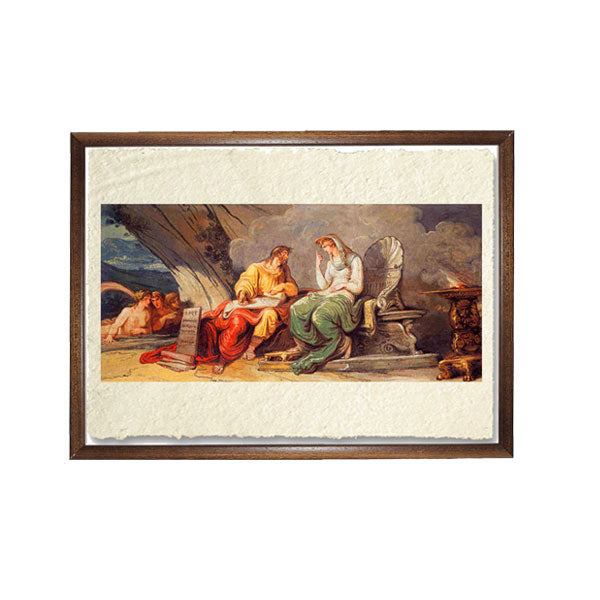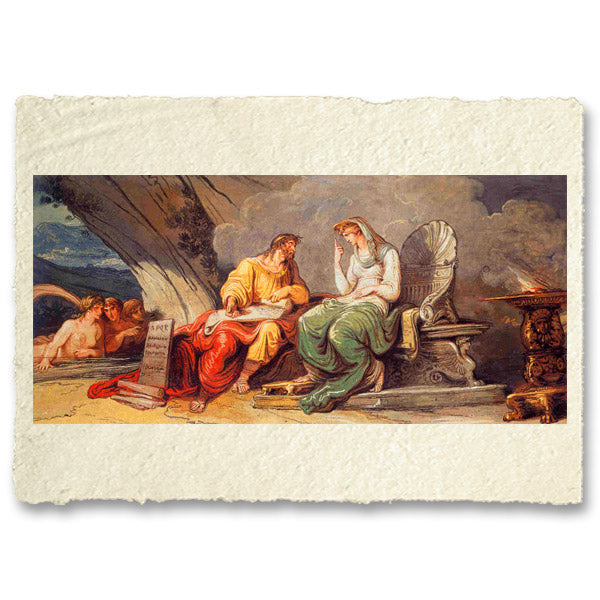Numa Pompilius speaks with the nymph Egeria
Numa Pompilius speaks with the nymph Egeria
Couldn't load pickup availability
SKU:WTCMDVXPNGFYS
BUY ONLINE, INSURED TRACEABLE DELIVERY
Unique quality material
Print on handmade paper from Amalfi
Measurement : 29 x 42 cm
Material : work printed on very fine handmade Amalfi paper with fringed edges
Frame : Handmade light brown beech wood
YOU WANT A CUSTOMIZED PRODUCT
OR INFORMATION? WRITE TO US
The work
Numa Pompilius receives the laws of Rome from the nymph Egeria
Palace of the Spanish Embassy, Hall of Legislators, Rome
The work is titled "Numa Pompilius receives the laws of Rome from the nymph Egeria" and is an oil painting on canvas created by Giani Felice in 1815. The painting depicts a scene from the legend of Numa Pompilius, the second king of Rome , who according to tradition he went at night to a forest near the Porta Capena to meet the nymph Egeria, his lover and advisor. From her, Numa received inspiration on the laws and rites to be instituted in Rome, such as the reform of the calendar, the creation of various priestly classes and the prohibition on representing divinities with human or animal features.
The painting by Giani Felice shows the moment in which Numa, sitting on a rock, listens attentively to the words of Egeria, who hands him a scroll of parchment. The nymph is wrapped in a white veil and has a sweet and affectionate look. Numa wears a red tunic and a laurel wreath, symbols of his royal power. In the background you can see some trees and a spring, which according to the myth was born from the tears of Egeria after the death of Numa.
Giani Felice was an Italian painter, born in Rome in 1789 and died in the same city in 1862. He was a pupil of Vincenzo Camuccini and specialized in historical painting, drawing inspiration from the themes of classical antiquity and Roman history. Among his best-known works are "The Death of Virginia", "The Death of Lucretia" and "The Death of Cato Uticensis". He was also an appreciated portraitist and decorator of palaces and churches.
How reproductions are made






Scopri i pregiati materiali di Trizio Editore
Carta di Amalfi fatta a mano, cornice in legno di faggio e vetro museale. Guarda i particolari dei prodotti che renderanno la tua casa più elegante e preziosa.






